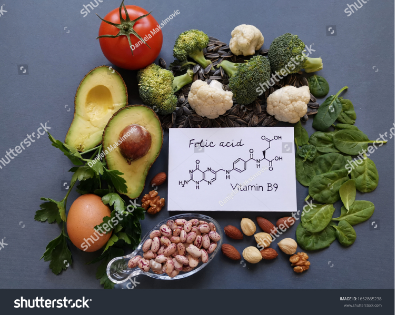Inside Labs
Inside Labs
Study Finds Link between Nutrient Levels and Mortality in Korean Adults
Update 10.10.2023
Study Finds Link between Nutrient Levels and Mortality in Korean Adults
Previous studies revealed that folate deficiency and hyperhomocysteinemia increase the risk of all-cause, cardiovascular disease (CVD), and cancer-related mortality.
Folate and metabolically related B vitamins are essential throughout life. The potential benefit of folate in reducing the risk of chronic diseases may be achieved through either its homocysteine-lowering or independent effects.
A new study published in The Journal of Nutrition examined the relationship of serum folate and homocysteine concentration with the risk of all-cause and cause specific-mortality in Korean adults aged ≥40 years. This study, which followed-up 21,260 men and women over 12 years found association of higher serum homocysteine level and lower serum folate concentration with increased risk of all-cause CVD and cancer-related mortality.
Specifically, a nonlinear inverse association was observed between serum folate concentration and all-cause mortality in men, whereas serum homocysteine concentration was positively associated with all-cause and CVD mortality in both men and women. The study also found a stronger association between hyperhomocysteinemia and mortality in older men, men with comorbidities, and women who drank alcohol. Relatively low folate concentration in men compared to women may partially explain the sex differences in the study findings. In a previous meta-analysis of randomized controlled trials, the benefits of folic acid in CVD prevention were more pronounced in participants with lower baseline blood folate concentrations.
Overall, this study adds to the growing body of evidence regarding the potential health benefits of adequate folate intake, particularly in populations with folate deficiency. Further research is needed to clarify the sex-specific role of serum folate level on health outcomes.

Fig 1. Folate food sources: Dark green leafy vegetables, beans, peanuts, fruits/fruit juices, and eggs.
Reference
Authors: Sihan Song, Bo Mi Song, Hyun-Young Park
Title: Associations of serum folate and homocysteine concentrations with all-cause, cardiovascular disease, and cancer mortality in men and women in Korea: the Cardiovascular Disease Association Study
Journal: The Journal of Nutrition
Published date: March 2023
DOI: https://doi.org/10.1016/j.tjnut.2023.01.023
Funding
This study was supported by the "National Institute of Health" research project (grant number 2021-NI-015-01).
Author information
This publication is the result of the research project entitled "Women’s health research for prevention and management of non-communicable diseases”. The project aims to contribute a better understanding of the risk factors of health and disease in Korean population by producing data on women's health and conducting sex-specific epidemiological research.
About National Institute of Health in Korea
The Korea National Institute of Health (KNIH), a major operating component of the Ministry of Health and Welfare, has been leading national medical research efforts. Over the past seven decades, the KNIH has made unwavering efforts to enhance public health and innovate in biomedical research. KNIH seeks to eradicate diseases and make people healthier. The KNIH establishes the scientific basis and provides evidence underlying health policy development and national research infrastructure. We also promote public health research. To this end, we make efforts to enrich the health research environment by granting funds for research projects and keeping our resources, data, and facilities more open and accessible to researchers.

